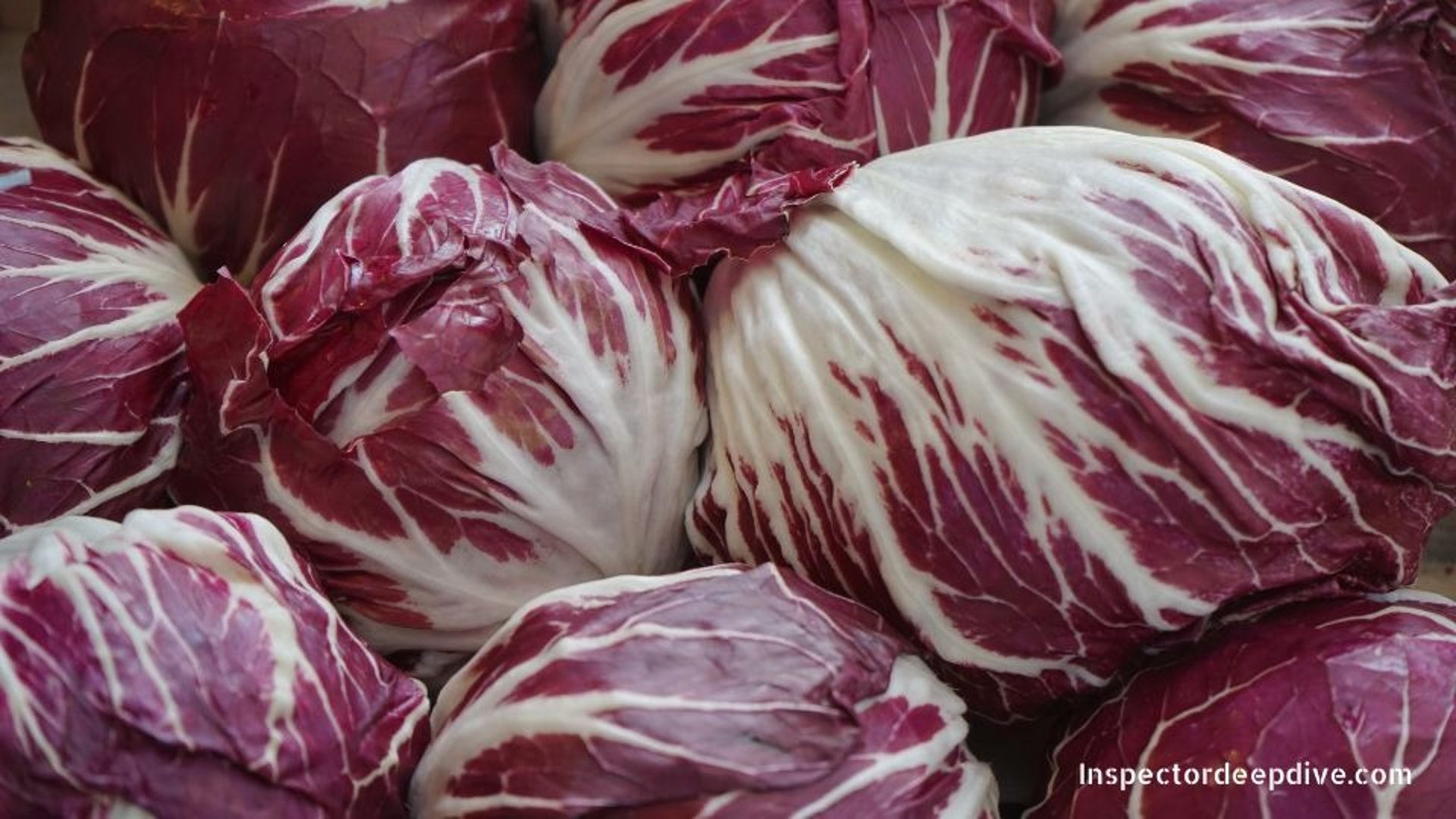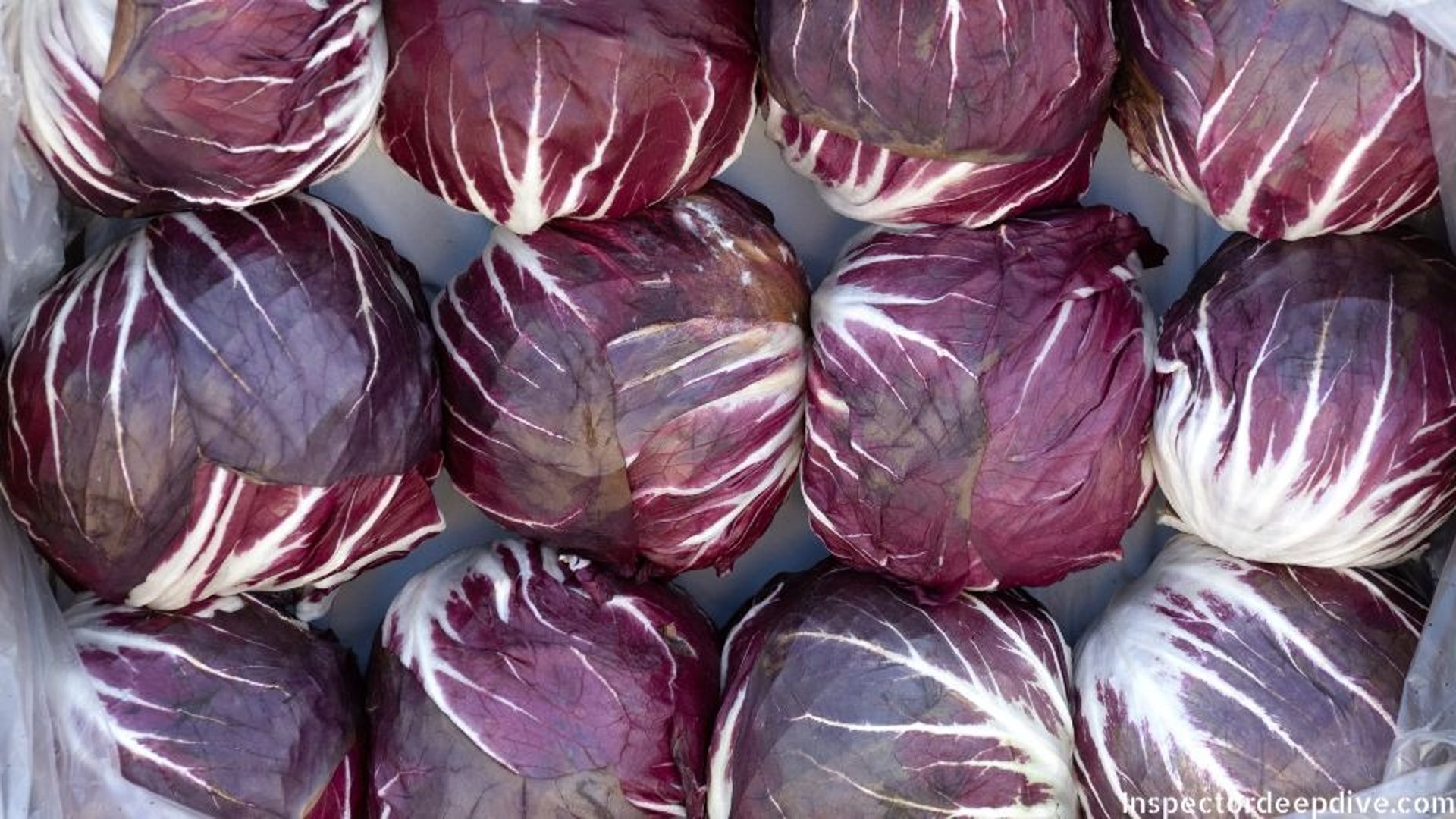
Radicchio (Red Chicory): Health Benefits and Nutritional Facts

Radicchio (Red Chicory): Health Benefits and Nutritional Facts
Radicchio: (Cichorium intybus)
Scientific name: Cichorium intybus
Family: Asteraceae
Common names
Radicchio, red chicory, Italian chicory
What is radicchio?
Radicchio is a leafy vegetable with deep red or purple leaves and white veins. It has a distinctly bitter, slightly spicy flavor and is used both raw (in salads) and cooked (grilled, roasted, braised). Radicchio is a type of chicory prized for its color and flavor contrast in dishes.
Origin and history
Radicchio originated in Italy and has been cultivated for centuries, particularly in the Veneto region. It is now grown worldwide and is a staple in Italian cuisine.
Varieties
Chioggia: Round, cabbage‑like head with deep red leaves.
Treviso: Elongated, romaine‑like shape with a milder flavor.
Castelfranco: Looser head with speckled red and green leaves and a delicate taste.
Seasonality & availability
Radicchio prefers cool weather and is typically harvested in fall and winter. It is widely available year‑round, but peak flavor occurs in colder months.
Benefits
Rich in antioxidants that help protect cells from oxidative stress.
Bitter compounds in radicchio support liver function and digestion.
High in dietary fiber, which aids gut health and promotes satiety.
Low glycemic index and modest carbohydrate content may help support blood sugar stability.
The “Anti” factor
Anti‑inflammatory: Contains anthocyanins and polyphenols that may reduce inflammation.
Antioxidant: Neutralizes free radicals and protects cellular components.
Anti‑cancer (potential): Anthocyanins and related phytonutrients are studied for protective effects against oxidative‑stress related disease.
Anti‑bacterial (mild): Some bitter compounds exhibit mild antimicrobial activity.
Nutritional breakdown (per 100 g raw)
Vitamins
Vitamin K: 255 µg supports blood clotting and bone health
Vitamin C: 8 mg supports immune function and collagen synthesis
Folate: 60 µg aids cell division and is important during pregnancy
Minerals
Potassium: 302 mg regulates fluid balance and supports heart function
Calcium: 40 mg contributes to bone health
Iron: 0.6 mg involved in oxygen transport
Macronutrients
Energy: 23 kcal low‑calorie vegetable for light meals
Water: 92 g high water content supports hydration
Protein: 1.4 g small contribution to daily protein needs
Total fat: 0.3 g minimal fat content
Carbohydrates: 4.5 g includes natural sugars and fiber
Dietary fiber: 1.6 g supports digestion and fullness
Sugars: 0.6 g naturally occurring
How radicchio affects the body
Radicchio provides antioxidants (notably anthocyanins) and bitter phytochemicals that support antioxidant defenses, liver function, and digestive activity. Its fiber helps feed beneficial gut bacteria and promotes regularity, while potassium and other minerals contribute to cardiovascular and cellular function.
Who should be cautious
Individuals on blood‑thinning medications should monitor intake because of radicchio’s high vitamin K content.
People sensitive to bitter flavors may prefer radicchio cooked or balanced with sweeter ingredients.
Surprising facts
Radicchio is botanically a chicory, not a lettuce.
Its deep red color is due to anthocyanins—the same class of antioxidants found in berries.
Environmental impact
Radicchio grows well in cool climates and typically requires moderate water. Short shelf life can increase waste if not stored or used promptly; buying local and in season helps reduce environmental impact.
Best culinary uses & chef tips
Serve raw in salads for color and bitter contrast—pair with sweet or acidic ingredients (balsamic, honey, citrus) to balance the bitterness.
Grill, roast, or braise to mellow bitterness and develop caramelized notes.
Use the dark leaves for presentation and the inner heart for a slightly milder bite.
Clean thoroughly, then dry before dressing to maintain crispness.
Storage & shelf life
Store radicchio in the refrigerator in a plastic bag or container lined with paper towels to absorb moisture. Use within about one week for best texture and flavor.
Label reading tips
Choose firm, compact heads with vibrant red or purple leaves and clean white veins. Avoid heads with browning or limp leaves. Organic labels indicate reduced synthetic pesticide use for those who prefer it.
Recipe ideas
Grilled radicchio with balsamic glaze and shaved Parmesan
Radicchio and apple salad with walnuts and blue cheese
Roasted radicchio with olive oil and garlic
Radicchio risotto with pancetta and thyme
Braised radicchio with honey and lemon
Science behind it
Radicchio’s anthocyanins and bitter compounds are associated with antioxidant and anti‑inflammatory activity in laboratory and observational studies. These phytochemicals are under study for potential roles in chronic‑disease risk reduction when consumed as part of a balanced diet.
FAQs
Is radicchio healthy? Yes radicchio is nutrient‑dense and rich in antioxidants, fiber, and vitamins.
Can you eat radicchio raw? Yes radicchio is commonly eaten raw in salads or as a garnish.
How do you store radicchio to keep it fresh? Refrigerate in a bag or container with paper towels to absorb moisture and use within about a week.
info@inspectordeepdive.com
© 2025 food.InspectorDeepDive.com. All rights reserved. Content may not be copied or republished without permission.
This article is for informational purposes only. InspectorDeepDive.com does not provide medical advice. Always consult a licensed healthcare provider before making dietary or health decisions.
